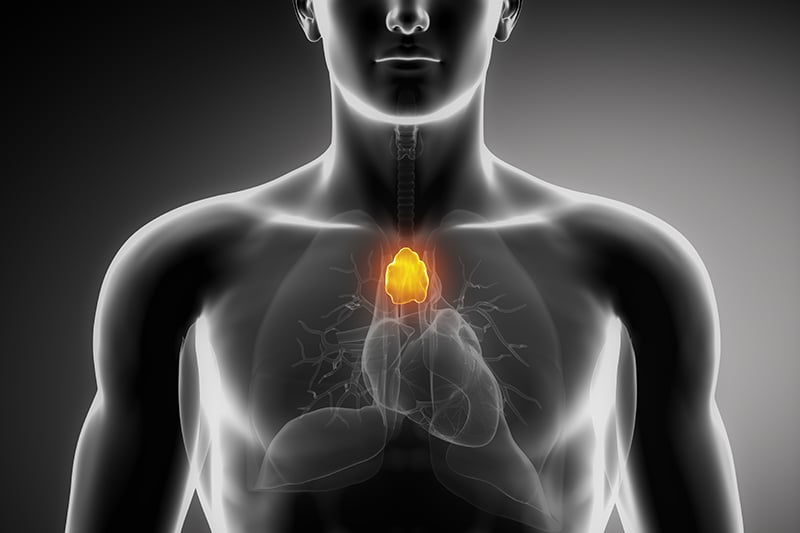
Thymoma: Tumor That You Must Observe
What is Thymus Gland?
A thymus is an organ that functions as lymphoid tissue and an endocrine gland. The gland is located in front of the heart and aorta behind the breastbone and shaped like a butterfly. It plays an essential role in the development of healthy white blood cells called T-cells which produce thymosin hormone to stimulate the production of T-cells. In a normal condition, the thymus gland will grow until you reach your teenage years, then it will shrink to a fat tissue during your adulthood.

Thymoma
Thymoma is the most common tumor in the upper chest among patients aged 40-50, equally in both male and female. One in three patients will be asymptomatic. Doctor will have to perform a chest X-ray or chest CT for more than half of the patients who also have MG Myasthenia Gravis, a chronic autoimmune, neuromuscular disease that causes weakness in the skeletal muscles. The first indicated symptom is droopy eyelids in the afternoon or evening, followed by weakness in the arms and legs. In severe cases, there will be shortness of breath which requires tracheal intubation due to weak diaphragm muscles. Another group of patients may have autoimmune diseases, such as thrombocytopenia, a condition with a low blood platelet count. Patients with a large tumor will suffer from compression of the lump on nearby organs such as shortness of breath or coughing from bronchial pressure, swollen arm and face from the pressure on the main vein, etc.

Thymoma Staging
There are 4 stages of tumor known as Masaoka staging as followed:
- Microscopic Transcapsular Invasion
- Macroscopic invasion into surrounding fatty tissue or grossly adherent to but not through mediastinal pleura or pericardium
- Macroscopic invasion into neighboring organs (ie, pericardium, great vessels, or lung)
- Metastatic thymoma
- Pleural or Pericardial Dissemination
- Lymphogenous or Hematogenous Metastasis
Treatment for Thymoma
The main treatment is surgery.
- Stage 1: Surgical removal of the tumor.
- Stage 2 & 3: A combination of surgery and radiation.
- Stage 4: A combination of surgery, radiation, and chemotherapy.

VATS Thymectomy
It is a minimally invasive technique where a tiny camera and surgical tools are inserted into the chest wall without rib expansion, unlike the previous type called Median Sternotomy, an open surgery in which the sternum is divided. The pain after VATS Thymectomy is lesser with smaller incision which is located on the side of your body compared to the front wound of median sternotomy. Patients can return to work faster. There’s no cutting of sternum and patients stay in the hospital 1-3 days compared to 5-7 days of open surgery.
Comparative studies between VAT thymectomy and median sternotomy for stage 1 and 2 which are smaller than 4-5 centimeters, showed that there was no difference in terms of total removal or recurrence. But there are significant differences in terms of pain and duration of hospitalization and recovery.
Today, thymoma treatment can be done by thymectomy, so the patients can return to their quality of life at no time.
Dr. Padungkiat Tangpiroontham concluded:
“Thymectomy can totally remove thymus gland effectively the same as open surgery. But the pain after the surgery is lesser, duration for hospitalization is shorter and recovery is faster.”

Source: Dr. Padungkiat Tangpiroontham,
Endoscopic Lung Surgery Specialized in Thoracic Surgery, Bangkok Heart Hospital and Wattanosoth Cancer Hospital